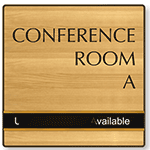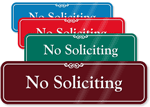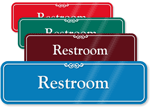The science behind the way stores smell
Ever visit the Hard Rock Hotel in Orlando, where wafts of sugar cookie and waffle cone scents signal the ice cream shop? Perhaps you’ve tried to hunt down a subtle scent you first smelled in, say, a Hugo Boss store, or piled up your shopping cart with Christmas-themed scented candles. If you have, you’ve experienced the subtle effects of smell on retail. In each of these instances, a scent marketing company developed specific fragrances to please — and lure — customers.
And the nose knows, apparently. Scents pumped into retail stores may do more than merely create a positive shopping experience. As Quartz recently reported, consumer researchers have already discovered that smell has a measurable impact on customers. Now, a new study, published in the International Journal of Marketing Studies, finds that consumer behavior, thoughts, judgements on products and on store environments, and intentions on visiting shops can all be affected by smells.

Scent affects the emotional part of the brain. From Bradley Gordon.
This new study analyzed the impact of the “presence and absence of an ambient scent” on 400 customers, discovering that people “felt greater pleasure and stimulation, expressed intention to revisit the store, and spent more in a scented environment than in an unscented one.”
The retail value of scents comes down to basic science, according to Jennifer Dublino, vice president of development at ScentWorld Events, the scent marketing industry’s American trade group. Dublino explains, “Smell is one of the most unique of human senses… Scent enters the limbic system [of the brain] and bypasses all of the cognitive and logical thought processes and goes directly to the emotional and memory areas of the brain. There’s an instant effect on the customer.” And the scent marketing industry is poised to take advantage: that industry is growing 15 percent yearly worldwide, with Asia leading the pack, followed by Latin America and the Middle East.
Scent marketing, according to The Globe and Mail, can be classified into two types: “ambient scenting, which uses pre-existing smells, such as movie theatre popcorn, to recall consumer memory,” and, second, “olfactive branding,” which develops aromas based on a brand’s objectives. As Ed Burke, director of marketing and communications for ScentAir, one such company, explained in an email to Quartz: “We look for inspiration in everything from the customer’s overall corporate objectives right down to store material or the types of employee interaction with their consumers.” ScentAir has 80,000 client locations throughout 109 countries.
Are unsuspecting customers being driven to make purchases they — sans scents — otherwise wouldn’t have made, any more so than when propelled by a visually-beautiful product display, or another form of sensory marking? Some researchers believe so. “Scent affects mood and scent affects emotion,” Kevin Bradford, a marketing professor at the University of Notre Dame’s Mendoza College of Business told The Globe and Mail. “It works without you having the opportunity to filter it. To me, that is extremely unethical.”
Try this simple experiment: Just follow your nose to the nearest mall, and see where it leads you.
Category: New Products














